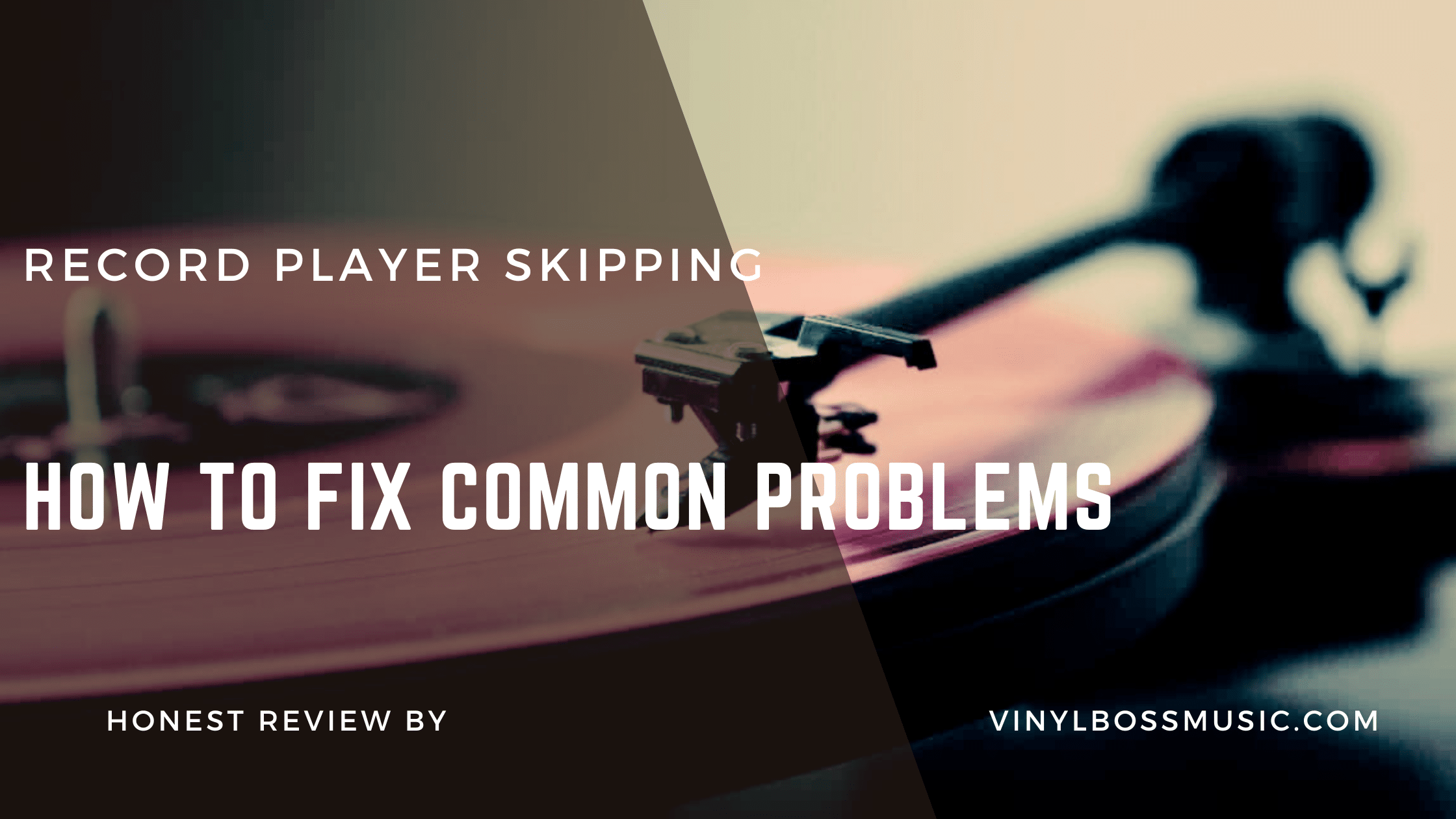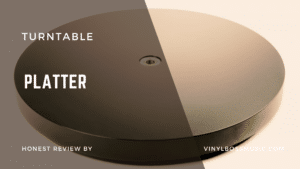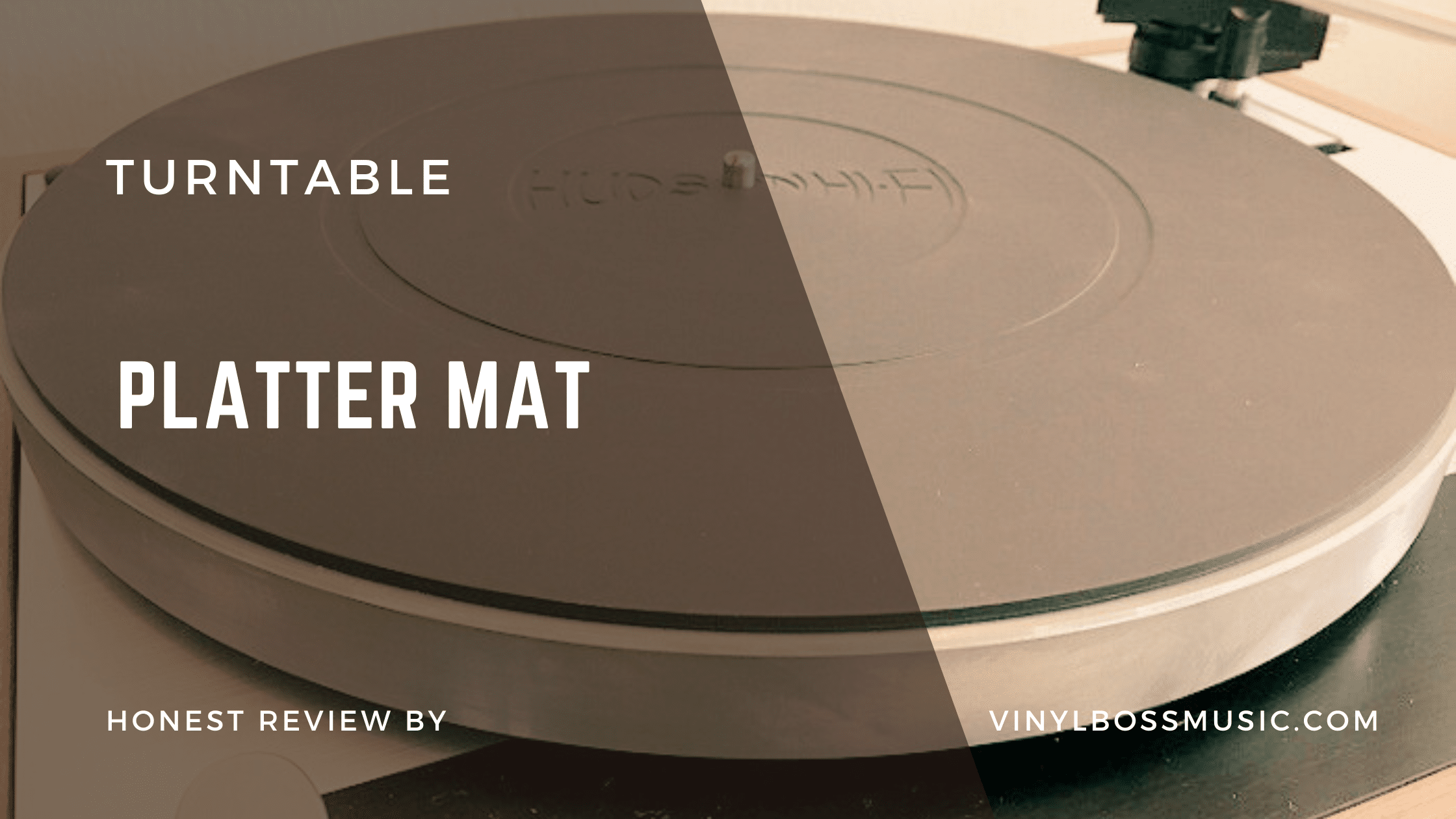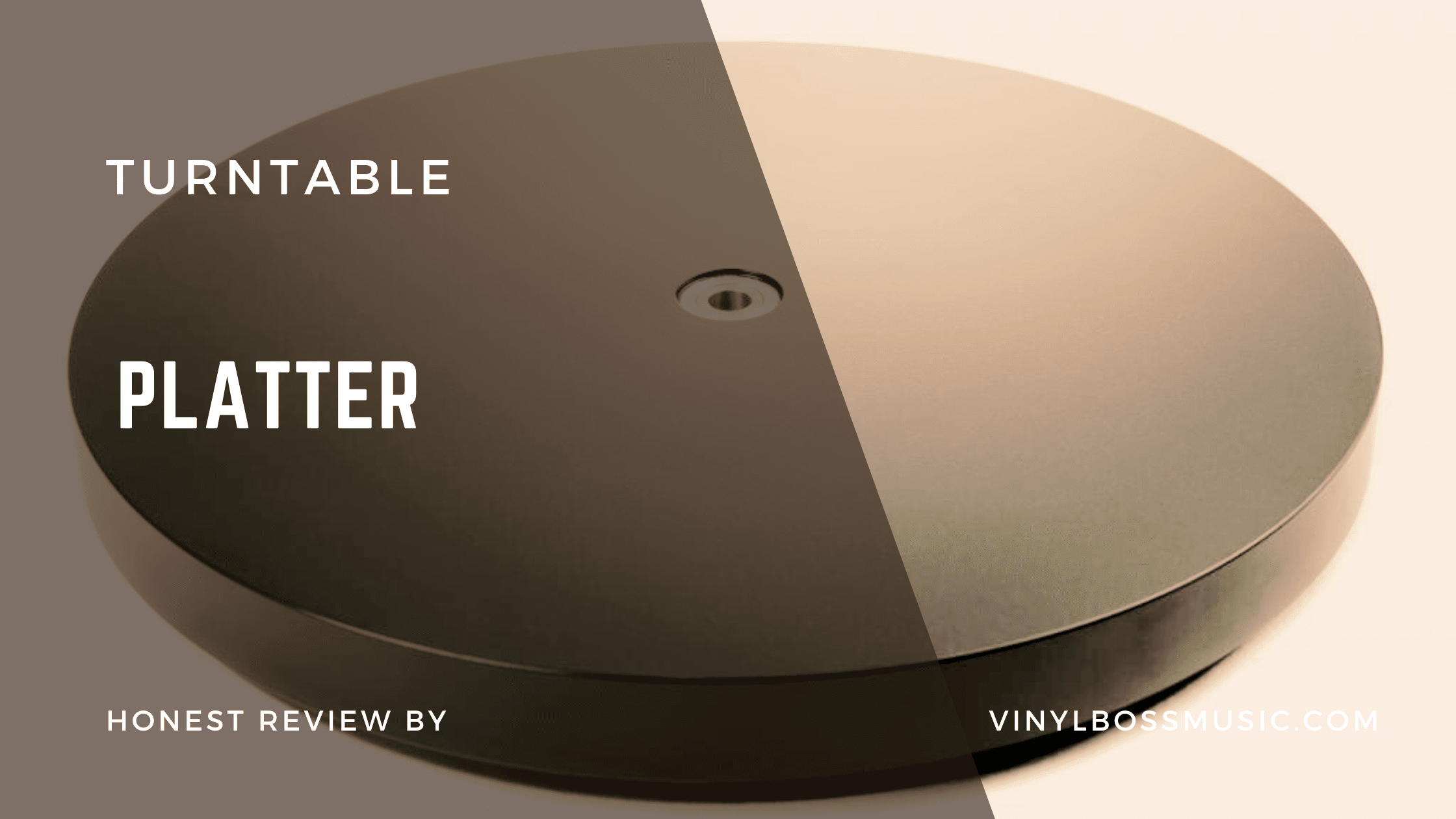There’s nothing as annoying as having records that keep skipping. Yet, the problem is not uncommon, given the sensitivity of analog audio playing. A dirty needle or faulty setup, for example, is enough to throw the stylus into some type of frenzy. The good news is that you can easily diagnose and fix the real issue behind the stylus misbehavior.
How do vinyl records work
A vinyl record can be viewed as an inked fingerprint left on paper, only that the imprint is that of sound instead of physical markings. Each side of the record is characterized by a single groove resembling a miniature canyon. As the record turns, the needle moves along the grooves, jumping up and down. This causes it to vibrate and generate voltages within the cartridge, which are then sent to an amplifier and converted into sound.
Record skipping can occur when the stylus is unable to remain at the center of the groove, causing it to veer off course. The misalignment interferes with the smooth flow of playback and leads to jumps or repeated sections in the audio.
Why is my record skipping? Top 10 reasons
The stylus veering off the groove can be attributed to two major reasons—either a problem with the vinyl record itself or the player. When the vinyl accumulates dust, it can bump the needle out of place, causing it to skip. Static electricity, or warps and scratches on the records, could also generate problems that lead to skipping. Similarly, improper configuration or damaged components in the record player can worsen skipping problems.
Record skipping: Issues with the vinyl
Vinyl Disc Warps
Improper storage and temperature variations can cause your vinyl disc to warp, forming curves or bends across its surface. A deformed record cannot sit flat on the turntable or rotate smoothly, which leads to tracking issues. As the stylus transverses the grooves, it encounters uneven surfaces, causing it to jump or skip the grooves. This interrupts the playback and degrades the overall listening experience.
Groove Dust on Vinyl
The stylus could act up due to accumulated dust and debris on the grooves. When it comes across these particles, it can lose contact with the groove, resulting in skips. Imagine a small needle navigating a pathway full of dust. Just as a small rock or obstacle can divert its course, dust or debris can disrupt the stylus’ smooth journey through the grooves.
Vinyl Record Static
Like dust, static electricity on your record can cause the same skips during playback. Think of a balloon rubbed against your hair; the static charge causes it to stick to surfaces. The same happens if the record surface has a static buildup. The stylus can easily stick to it, leading to the skipping problem.
Records Scrapes & Scratches
Scrapes and scratches on a record can spook the stylus and cause it to skip excitedly forward or backward. Just like a car encountering potholes shaking passengers, scratches on records could shove the stylus, causing it to temporarily lose contact with the groove and skip.
Why is my brand-new record skipping?
If your vinyl is clean, devoid of warps or scratches, yet still skips, the issue may stem from the record player. But with numerous components at play, how do you identify the real cause? Here are the specific components you need to check out if the stylus starts acting up:
Record player causes audio recording skipping
Anti-Skate Setting and Incorrect Calibration of Record Player
Designed to offset the internal force applied on the needle, the anti-skate setting prevents the stylus from taking unwanted directions on the vinyl surface. Improper adjustments can apply excess or too little force that causes the needle to skip. Similarly, if the record player is not correctly calibrated, it might misalign the needle’s tracking force and lead to jumps.
Tonearm Imbalance
Tonearm imbalance is another likely culprit behind record skipping. Ideally, a balanced tonearm ensures the stylus exerts steady and correct pressure on the groove. So, an imbalance means the application of uneven pressure on the stylus. This leads to tracking inconsistencies that cause the needle to veer off the groove at some point.
Dirty Needle
The same way a disc harbors dust or dirt over time, the stylus is no exception. Obviously, a dirty needle isn’t good as it interferes with proper contact with the groove. However, you shouldn’t get too stressed about an unclean stylus because there is a fast and easy solution. Check out our guide on how to clean the needle to understand the remedy.
Needle Is Damaged
When the needle gets damaged, it can easily skip over grooves that it would have otherwise glided through under normal circumstances. A faulty stylus also risks the record itself; if not replaced, your precious vinyl could get damaged, too. You don’t want that to happen, do you?
Vibrations Affecting Playback
Some turntables are poorly designed such that they are unable to minimize vibrations, say from the motor. If this is the case, it’s easy for the needle to be jostled and interrupted by these vibrations. Though not emanating from the record player, external vibrations can also be blamed for the skipping problem.
Turntable on an Uneven Surface
A surface not leveled evenly interferes with a turntable’s stability, causing vibration and wobbling. Consequently, the stylus is unable to track your record consistently. When amplified, the vibrations will likely shake the stylus and cause it to skip grooves. The result is a distorted and interrupted playback.
9 Tips on How To Fix A Skipping Record
Now that you know what makes your records skip, the next obvious thing to do is learn how to fix the problem. As previously noted, the underlying issues can vary, so it’s up to you to identify the specific one and rectify it. Find below tips to help you:
Place the turntable on a flat surface
This solution may sound obvious and straightforward. But the trick lies in using a bubble level. As such, place the tool on the platter and measure the outcomes; the bubble level should be at the central position or close. Just adjust the height by turning the device’s rubber feet up or down. In case your turntable lacks adjustable feet or the surface it’s resting on doesn’t have it either, shift the device to a flatter surface.
Balance the needle tracking force
You can achieve this by rotating the counterweight forward or backward. The amount of weight that should be applied to the cartridge is indicated by the dialed numbers on the edge. Ensure the tracking force aligns with the manufacturer’s recommendations.
Set up anti-skating
The most ideal anti-skate setting is the one that matches the tracking force. Let’s say the recommended counterweight is 2 grams, so the anti-skate dial should also read “2.” That sounds easy, right? Nonetheless, if the skipping problem persists and the stylus jumps outside the record, try reducing the anti-skate amount.
Replace the needle
You can install another needle when it gets damaged or reaches its full lifespan. The process is simple and fast. Begin by inserting a flat-head screwdriver into the tab above the needle on the tonearm’s front side. Wiggle the screwdriver to release the needle, then carefully place the new one and snap it into position.
Clean the needle
Use a brush to remove dirt and dust from the needle. The best way to do this is by brushing the stylus tip from back to front. Don’t brush it from side to side, as you risk knocking it out of position. For more tips and details, read our article on how to clean the needle.
Clean your vinyl record from dust and static
For optimal results, clean your records before and after playing them. Place the record on the platter, and don’t lower the stylus. Turn the device on for the record to rotate and gently hold the anti-static brush bristles on the record surface while moving it towards the center. You should be good to go after 3 rotations.
Check the record for warps, scrapes, and scratches
Closely examine the record for warps, scrapes, and scratches. You can do this by holding the record under a light source and spinning it slowly. Check for any visible warping (indicating unevenness). Run your fingertips lightly across the grooves to identify scratches or scrapes. However, if you don’t notice any defects but the record keeps skipping in a similar spot, the groove may be damaged.
Try to fix scratched record grooves with a toothpick or needle
Contrary to the general opinion, a scratched record can sometimes be fixed. Spot the scratched area and slowly run the point of a needle or toothpick in all the grooves that the scratch touches. Play the record again to confirm whether the skipping problem has been resolved. If the issue persists, then the scratch is too deep to rectify.
Try using a record weight
Have you considered using a record weight to even out a warped record? The process is pretty straightforward. Once you place the vinyl on the player’s platter, put the record weight on the center spindle. This will help flatten out some of the warps. Play the record afterward to determine if it still skips. You are free to replace the record if the weight fails to flatten it out.
FAQs
Why is my brand-new record skipping with no scratches?
Your record might skip due to issues with the turntable setup. Tonearm imbalance, a damaged stylus, improper anti-skate setting, or incorrect calibration might be the culprits. Internal and external vibrations, as well as failure to place the turntable on an even surface, might also be blamed.
Can a record skip be fixed?
Yes. If you can spot the underlying issue, then fixing it is possible. Let’s say a dirty or damaged needle is behind the skipping. You can replace or clean it. In case the record disc is dusty or static, clean it with the correct kit. And so on.
How do I stop my record from skipping?
You can stop the record from skipping by placing the turntable on a level surface, correctly balancing the stylus tracking force, and setting the right anti-skate. Also, examine the record for warps, scratches, or scrapes.
Can a dirty record cause skipping?
Yes. Dust and debris particles interfere with the stylus’s smooth journey through the grooves, causing it to skip. Dirty needles also have the same effect. Don’t worry, though. You can easily learn how to clean the needle and solve the problem.
Why is my record skipping at the beginning
Your record may skip due to an improperly balanced tonearm, a damaged stylus, incorrect calibration, warped/scratched record, or dust on vinyl, among other factors.
Can you fix a scratched record?
Yes, you can try. Run the end of a toothpick or needle on the scratched area as the record spins on the platter. Try to play the record after doing this to see if the skipping problem has stopped.








Leave a Reply